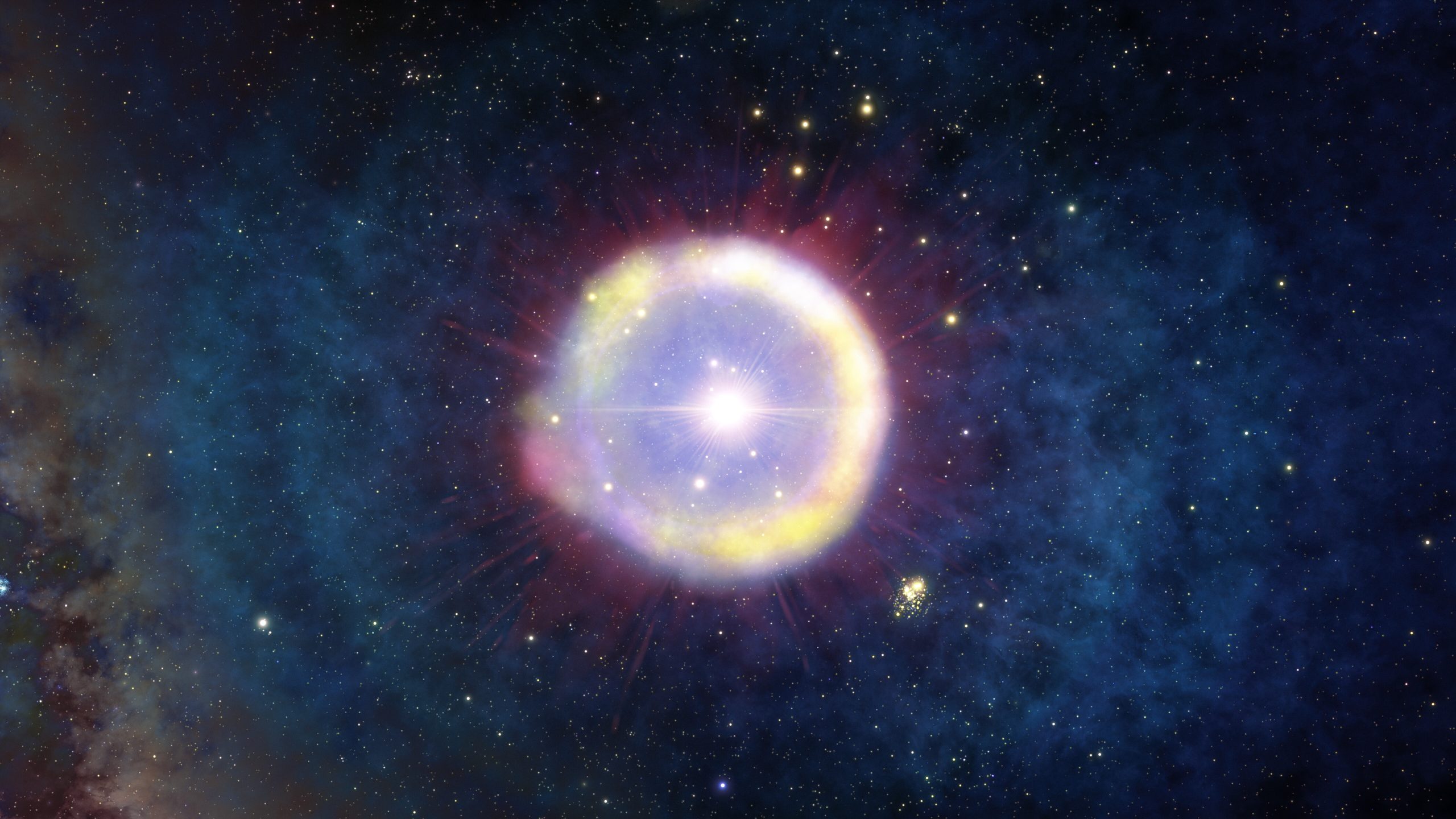The ashes of the very first stars
The universe was just 100 million years old when the first stars already flared up. Very early on, dark matter amplified inhomogeneities in the structure of the universe in such a way that there were areas with a higher concentration of hydrogen. This clumped together, and as still happens today, a star was formed. With our sun these very first cosmic beacons, which are called “Population III” today, are hardly comparable. They must have consisted mainly of hydrogen and helium – already because there were no other elements at all in the early universe. This is how these stars should be recognized – the spectrum of a star tells us its structure. In contrast, about 1.8 percent of the mass of our sun consists of heavy elements. However, because of the lower mass of the constituents, a Population III star had to be much larger than the Sun – it is estimated that the early stars weighed at least 100 solar masses. They burned fast and hot, so they may have long since passed away in a supernova. Nevertheless, it is possible to observe them: In distant galaxies whose light takes so long to reach us that we can peer deep into the past. At least that’s what astronomers hope, because so far their search has not been successful.
But traces of Population III can be found elsewhere. Analyzing one of the most distant known quasars with the Gemini North telescope, astronomers now believe they have identified the remains of the explosion of a first-generation star. Using a new method to determine the chemical elements in the clouds surrounding the quasar, they found a highly unusual composition – the material contained more than ten times as much iron as magnesium, compared to the ratio of these elements in our Sun. The scientists believe that the most likely explanation for this striking feature is that the material was left behind by a first-generation star that exploded as a pair-instable supernova. These remarkably powerful versions of supernova explosions have never been observed, but they are thought to end the lives of giant stars with masses between 150 and 250 times that of the Sun.
Pair-unstable supernova explosions occur when photons at the center of a star spontaneously transform into electrons and positrons – the positively charged antimatter counterpart of the electron. This transformation reduces the radiation pressure inside the star, allowing it to overcome gravity, leading to collapse and subsequent explosion. Unlike other supernovae, these dramatic events do not leave behind stellar remnants, such as a neutron star or a black hole, but instead eject all of their material into the surrounding environment. There are only two ways to find evidence for these events. The first is to catch a pair-instable supernova when it occurs, which is a highly unlikely coincidence. The other is to identify their chemical signature from the material they eject into interstellar space. For their research, astronomers examined the results of an earlier observation. A spectrograph breaks down the light emitted by celestial objects into its individual wavelengths, which provide information about what elements the objects contain. However, deriving the quantities of the individual elements is a difficult task because the brightness of a line in a spectrum depends on many factors other than just the abundance of the element.
Two co-authors of the analysis, Yuzuru Yoshii and Hiroaki Sameshima of the University of Tokyo, have tackled this problem by developing a method that uses the intensity of wavelengths in a quasar spectrum to estimate the abundance of elements present there. When they analyzed the quasar spectrum using this method, they and their colleagues discovered the strikingly low magnesium-to-iron ratio. “It was obvious to me that the supernova candidate would be a pair-instable supernova of a Population III star, where the entire star explodes without leaving a remnant,” Yoshii said. “I was pleased and somewhat surprised that a pair-instable supernova of a star with a mass about 300 times that of the Sun would yield a magnesium-to-iron ratio consistent with the low value we derived for the quasar.”
The search for chemical evidence of an earlier generation of massive Population III stars has already been conducted by other researchers among stars in the Milky Way halo, and at least a preliminary identification was presented in 2014. However, Yoshii and his colleagues believe that the new result provides the clearest signature of a pair-unstable supernova based on the extremely low magnesium-to-iron abundance ratio in this quasar. If it is indeed one of the first stars and the remnants of a pair-instable supernova, this discovery will help complete our picture of how matter in the universe evolved into what it is today, including us. To test this interpretation more thoroughly, many more observations are needed to see if other objects have similar features.
